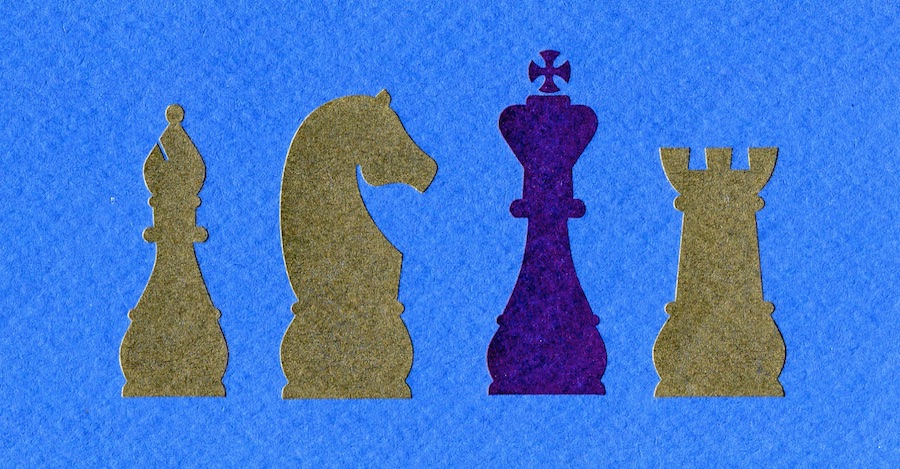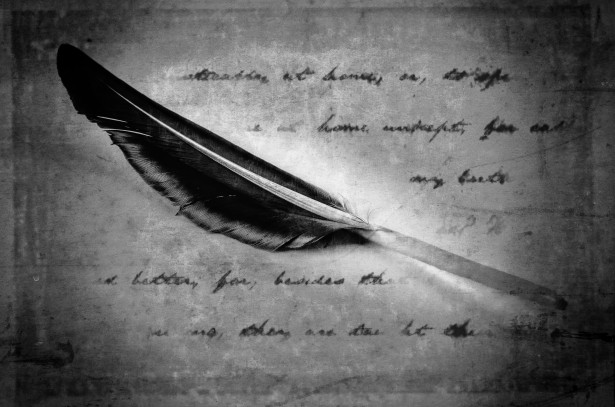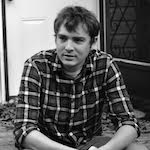Chapbook Excerpt by William Todd Seabrook
Two Pieces from The Imagination of Lewis Carroll
Editor’s Note: William Todd Seabrook’s The Imagination of Lewis Carroll won the Rose Metal Press Short Short Chapbook Contest in 2014. These witty bits of sense and nonsense have everything to do with the meaning of life, and we're delighted to feature them in TW's annual “Writing and Faith” issue.
Seabrook’s 25 flash prose segments—this excerpt includes "The Tea Party of Lewis Carroll" and "Why Is a Raven Like a Writing Desk?"—reimagine the life of Alice’s famous creator. Fiction? Nonfiction? Both? In his introduction, contest judge Michael Martone says Seabrook's "gutsy" chapbook "confronts the exhilaratingly convoluted quagmire of high Victorian nonsense" and adds:
Carroll, the logician and mathematician, saw language as an analog calculating machine. Seabrook recalibrates here, bringing to the language a digital elegance.
For more information about this “fabulist biography,” in the publisher’s words, see the Rose Metal Press page for The Imagination of Lewis Carroll.

The Tea Party of Lewis Carroll
The Bishop of Wales visited Christ Church in 1873 and requested a special audience with Lewis Carroll, saying that he feared for the man’s soul.
The two met for afternoon tea, sitting on either side of a table stacked high with delicate pastries, cookies, and gingerbread men. An ornate tea set wobbled on the edge of the table.
“Did you write both of these?” the Bishop asked, placing two books on the table and accidentally overturning a plate of Danishes.
Carroll picked up the books in his gloved hands. One was Alice in Wonderland and the other was Carroll’s mathematical thesis Syllabus of Plane Algebraical Geometry.
“I confess,” said Carroll with a laugh.
“I cannot find God in either of these,” the Bishop said. “Wonderland has not God’s plan nor Abraham’s morality, and there is no room for faith in your geometry.”
Carroll placed Alice in Wonderland upright on the floor, buttressing the tea tray that was dangerously close to falling.
“Maybe God isn’t in them,” Carroll said.
“God is in everything,” the Bishop replied. He took three sugars from the bowl, now confident that the weight difference wouldn’t topple the tray. “How can a man who has taken his Holy Orders believe otherwise?”
“The Orders have holes, as you just said.”
“But how do you reconcile such logic and nonsense?”
“Logic and nonsense are two sides of the same coin,” Carroll said.
“Aha! Where is God found then?”
“On the third side.”
The Bishop stood up and smoothed out his robes, making to leave.
“You will not make it to heaven on jokes alone,” the Bishop said.
Carroll showed him out the door, and said, “That is if you assume that this life is not already a joke, Your Excellency.”
Carroll did not wait for a response, but closed the door with such force the room trembled. The tray wobbled on the edge of the table, but it did not fall over.

Why Is a Raven Like a Writing Desk?
Lewis Carroll gave over 500 answers to his riddle Why is a raven like a writing desk?
When Alice Liddell asked him, Carroll said because both can produce a few notes, although they are very flat. When his friend Reverend Duckworth asked him at the rectory mess hall, he said because Poe wrote on both, and went back to his porridge. In a letter to a friend he said it is simple, really; both have quills dipped in ink.
When Alice in Wonderland became popular throughout England, Carroll found himself writing a half-dozen answers a day, scribbling them in letters and shoving them in the post.
Because a writing desk is a rest for pens and a raven is a pest for wrens.
Because they are both used to carrion decomposition.
Because both are associated with wood, sort of.
Both have letters.
Queen Victoria made a personal visit to Christ Church for a solution, and all Carroll told her was “Because there’s a b in both, and there’s an n in neither.”
When the Pope wrote Carroll a letter asking, “Why is a raven like a writing desk?,” Carroll wrote a thirty-page treatise explaining the writing desk as an allegory for God. The Pope wrote back asking, “What about the raven?,” and Carroll said that answers come to those who pray.
When Carroll was retching his lungs out of his chest in 1898, the opium muddling his mind, his physician couldn’t help but ask him for an answer. Carroll smiled and said that all ravens and writing desks had answers, none of them actually right, of course.
Art Information
- Cover detail from The Imagination of Lewis Carroll © Rose Metal Press; used by permission.
- "Black Feather" by George Hodan; public domain.
 William Todd Seabrook grew up in Cleveland, Ohio, received his MFA from the University of Colorado at Boulder, and is currently a Ph.D. candidate at Florida State University. His work has appeared in Tin House, Mid-American Review, PANK, CutBank, Quiddity, New Ohio Review, and 30 Under 30: An Anthology of Innovative Fiction by Younger Writers.
William Todd Seabrook grew up in Cleveland, Ohio, received his MFA from the University of Colorado at Boulder, and is currently a Ph.D. candidate at Florida State University. His work has appeared in Tin House, Mid-American Review, PANK, CutBank, Quiddity, New Ohio Review, and 30 Under 30: An Anthology of Innovative Fiction by Younger Writers.
Mud Luscious Press published his chapbook This Semi-Perfect Universe in 2011. His second chapbook, The Genius of J. Robert Oppenheimer, won the 2012 Firewheel Editions Chapbook Contest, and his third chapbook, The Passion of Joan of Arc, won the 2014 421 Atlanta Chapbook Contest.
